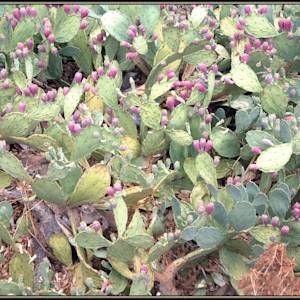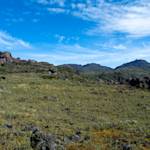West African Sahel
2023 CE • Mauritania, Mali, Burkina Faso, Niger and Chad
"The Sahel (more rarely spelled “Sahil” in the context of West Africa) is an ecozone that marks the transition between the Sahara desert to the north and the better-watered savanna to the south. Although for many . . . reference to the Sahel conjures images of a barren and impoverished region, it is in ecological terms rich in the diversity of desert and savanna flora and fauna it can support," including a large populations of grazing animals like gazelles and livestock, as well as larger predators such as cheetahs, lions, and African wild dogs. The Sahel is also an important wintering area for migratory birds like the Yellow wagtail and and the Woodchat shrike. "Historically, it was the site of transregional exchange, thriving urban centers, and legendary kingdoms and empires . . . Nevertheless, the literal desert edge of the Sahel could shift north or south with the significant variations in rainfall from one decade or century to the next. Rainfall variability defined living conditions in the Sahel. Between eleven thousand and five thousand years ago, during what is referred to as the Green Sahara period, vegetation and lakes covered what is now the Sahara desert. The climate has undergone a long-term aridification trend beginning five thousand years ago . . . These fluctuations produced a pulse pattern drawing populations more tightly together around the remaining water sources during dry periods, encouraging specialization in the exploitation of particular microenvironments."Today the Sahel region is the known for its environmental fragility with threats including climate change, land degradation, and desertification.
Barbara Cooper, "The Sahel in West African History," Oxford Research Encyclopedia of African History, September 26, 2018.
"Migrant Birds in the West African Sahel," Land Use Change and Migrant Birds in the Sahel: Research Brief 1, Cambridge Conservation Initiative.
Image: CIFOR via Flickr, Attribution-NonCommercial-NoDerivs 2.0 Generic (CC BY-NC-ND 2.0)


Learn about Maya Lin’s fifth and final memorial: a multi-platform science based artwork that presents an ecological history of our world - past, present, and future.

Discover ecological histories and stories of former abundance, loss, and recovery on the map of memory.

Learn how we can reduce our emissions and protect and restore species and habitats – around the world.

See how art can help us rethink the problems we face, and give us hope that each one of us can make a difference.

Help make a global memorial something personal and close to home. Share your stories of the natural world.


